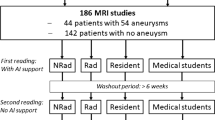Abstract
Within recent years, the broad introduction of fast multi-detector computed tomography (CT) systems and the availability of commercial software for perfusion analysis have made cerebral perfusion imaging with CT a practical technique for the clinical environment. The technique is widely available at low cost, accurate and easy to perform. Perfusion CT is particularly applicable to those clinical circumstances where patients already undergo CT for other reasons, including stroke, head injury, subarachnoid haemorrhage and radiotherapy planning. Future technical developments in multi-slice CT systems may diminish the current limitations of limited spatial coverage and radiation burden. CT perfusion imaging on combined PET-CT systems offers new opportunities to improve the evaluation of patients with cerebral ischaemia or tumours by demonstrating the relationship between cerebral blood flow and metabolism. Yet CT is often not perceived as a technique for imaging cerebral perfusion. This article reviews the use of CT for imaging cerebral perfusion, highlighting its advantages and disadvantages and draws comparisons between perfusion CT and magnetic resonance imaging.
Similar content being viewed by others
Author information
Authors and Affiliations
Corresponding author
Rights and permissions
About this article
Cite this article
Miles, K.A. Brain perfusion: computed tomography applications. Neuroradiology 46 (Suppl 2), s194–s200 (2004). https://doi.org/10.1007/s00234-004-1333-9
Issue Date:
DOI: https://doi.org/10.1007/s00234-004-1333-9




